The word facade originally comes from the Italian word “facciata”, and is defined as the outside or all of the external faces of a building. Along with the roof, it is one of the most important elements of a building, since it protects the building from external weather elements, helps to achieve lower energy consumption, reduce maintenance costs and improve comfort for the inhabitants. These exciting projects are wrapped in facades that are as functional as they are eye-catching.

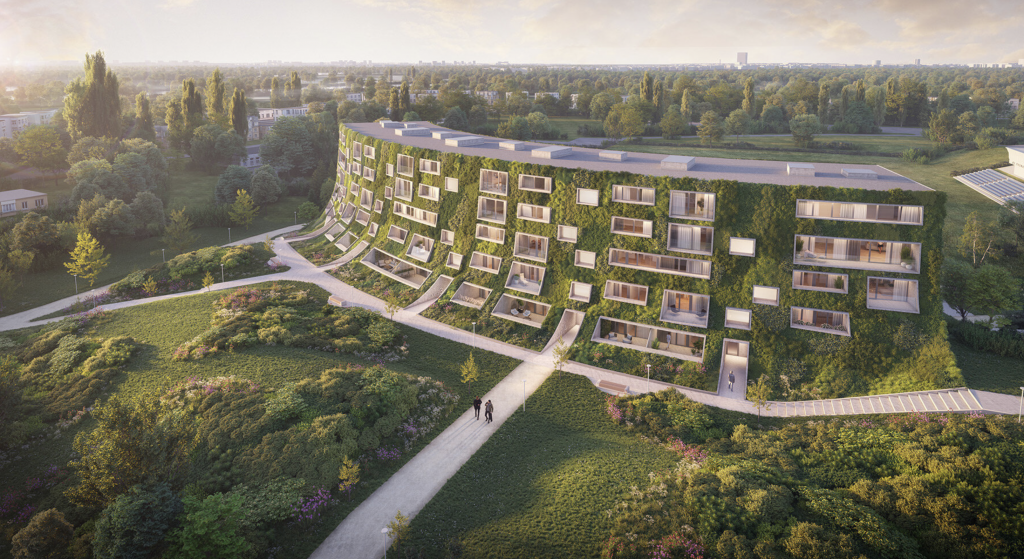
Aura by Robert Konieczny (also header image)
Polish architect Robert Konieczny, founder of KWK Promes, has enveloped a new residential project in Poznan, Poland, in a facade almost entirely covered in greenery. Titled Aura, the project represents a first of its kind in Poland. Emerging organically form the existing terrain, the building seems to be a seamless extension of the surrounding hillside.

Aura by Robert Konieczny
Closely collaborating with scientists from Poznan University of Technology and the University of Life Sciences, the architecture studio has wrapped the building in a staggering 140,000 plants, which will grow along a specially designed structure forming a vertical garden. Not only the plants minimize disruption to the existing ecosystem, they also offer residents easy access to fresh herbs and flowers. An automated irrigation system utilizing 90% rainwater collected on-site ensure the plants’ health, minimizing the need for manual maintenance.
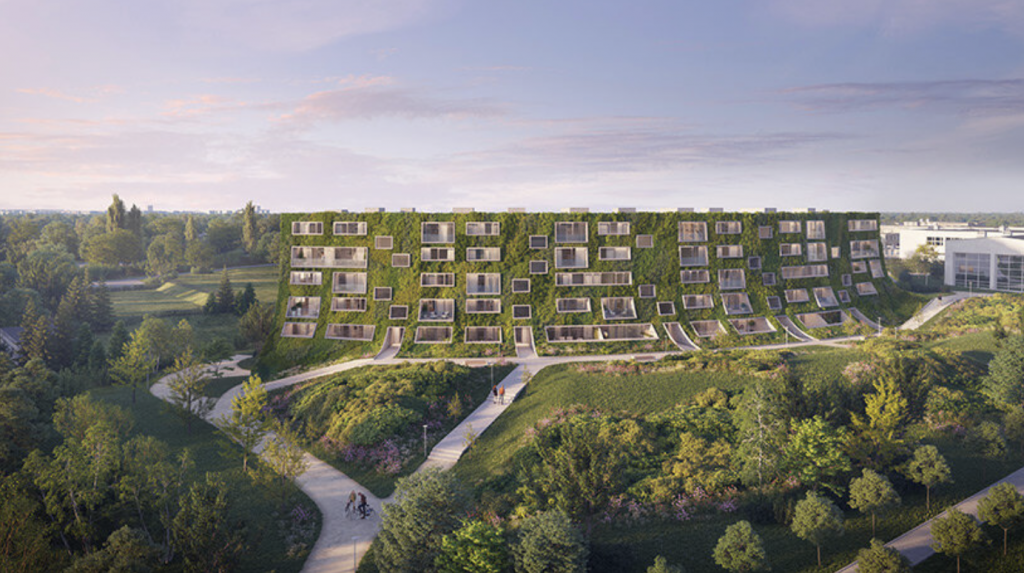
Aura by Robert Konieczny
Another tangible benefit for the residents is an air gap between the structure and the wall that functions as a natural insulator. Simultaneously, the gap protects the building from excessive hear during hot summer and provides natural cooling in winter.

La Canaria by Selgascano
Designed by Spanish architecture studio Selgascano on a steep hillside of northeast Los Angeles, a vibrant residence titled La Canaria is at once recognized by its facade crafted from recycled aluminum tubes. Painted in warm, buoyant hues reminiscent of the LA sunset, these shading screens serve as a protective canopy, which the team hopes will be reclaimed by nature over time, blurring the lines between architecture and environment.
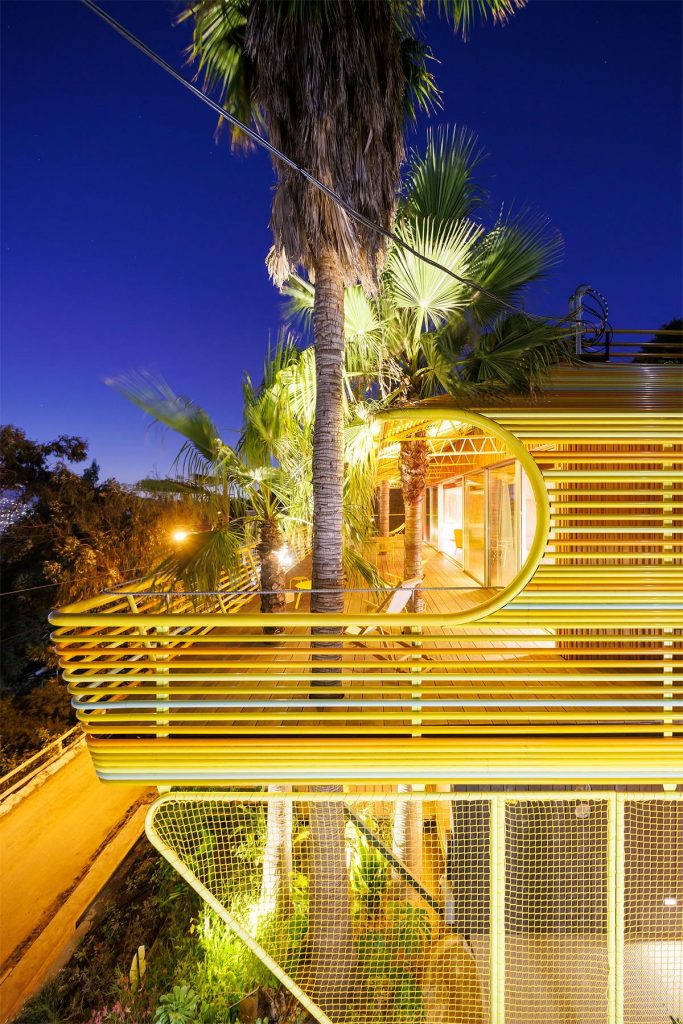
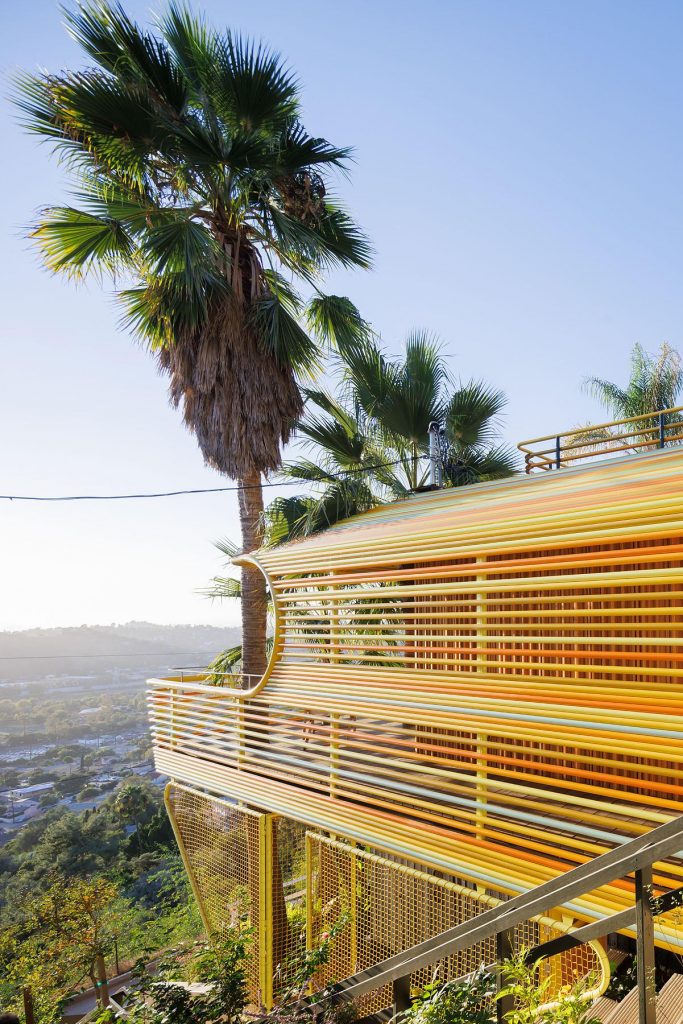
La Canaria by Selgascano
The team focused on ensuring to a fluid transition between interior and exterior spaces, which seems a natural solution in LA’s temperate climate. The colourful envelopment wraps both indoor and outdoor areas, including a spacious outdoor terrace, equivalent in size to the interior, which serves as a natural extension of the living quarters. The aluminium tubes frame the unobstructed panoramic views as well as protects residents from California’s scorching sun offering effective shading.
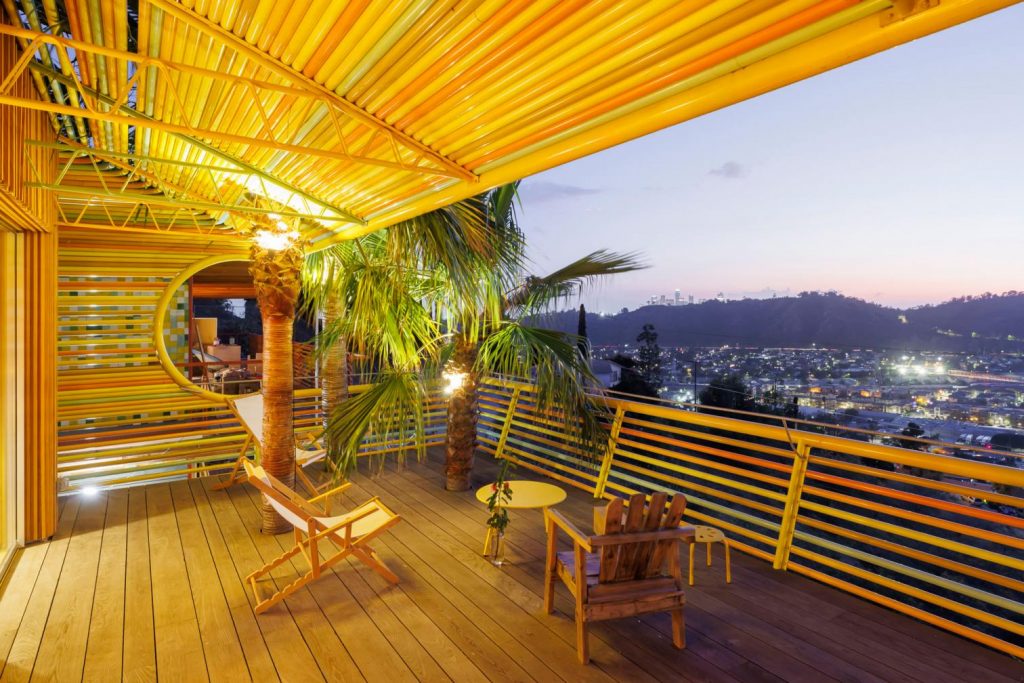
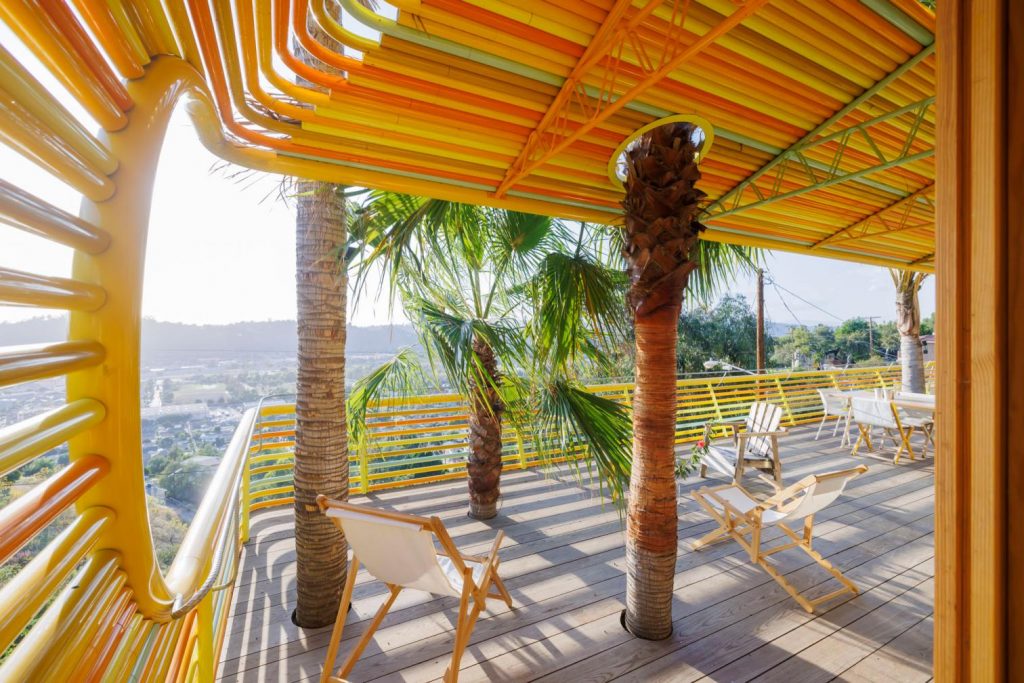
La Canaria by Selgascano
Despite its bespoke design, the architects planned every detail, from dimensions to materials, to ensure cost-effectiveness. Prefabrication of components outside Los Angeles and their subsequent prompt on-site installation showcase the studio’s commitment to delivering exceptional quality within budget constraints.
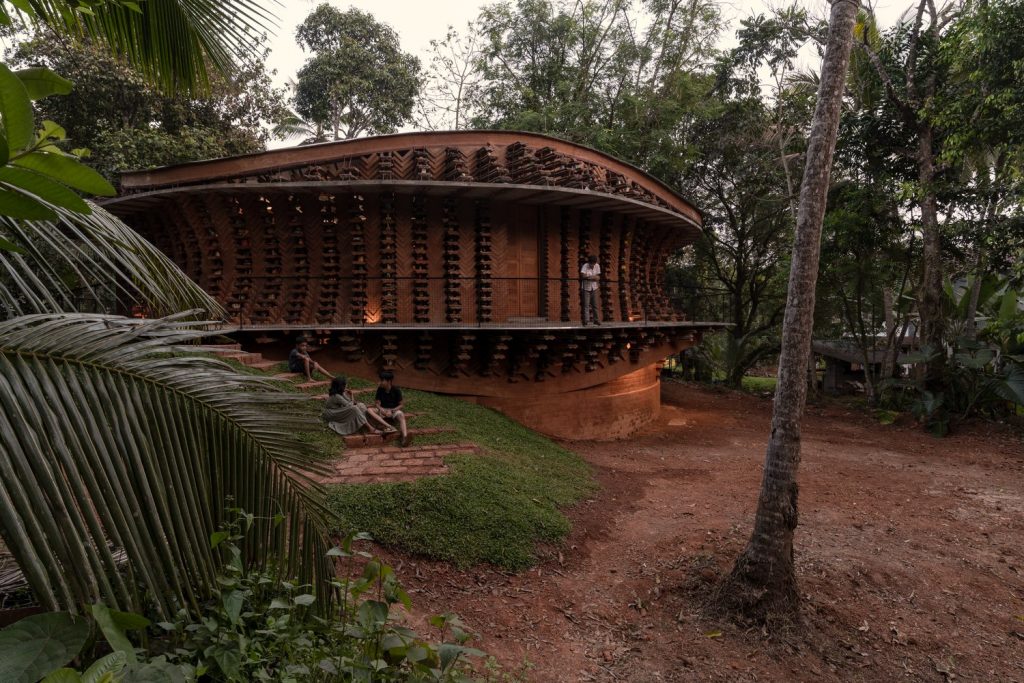
Toy Storey Residence by Wallmakers
The idea of the extraordinary facade for Toy Storey Residence in Vadakara, North Kerala, India, came to Vinu Daniel, lead architect at Wallmakers, after stepping on a LEGO brick. This experience sparked a deeper exploration of the ubiquitous use of plastic in the global toy industry, with an alarming 80% unsuitable for recycling, and its potential for repurposing.
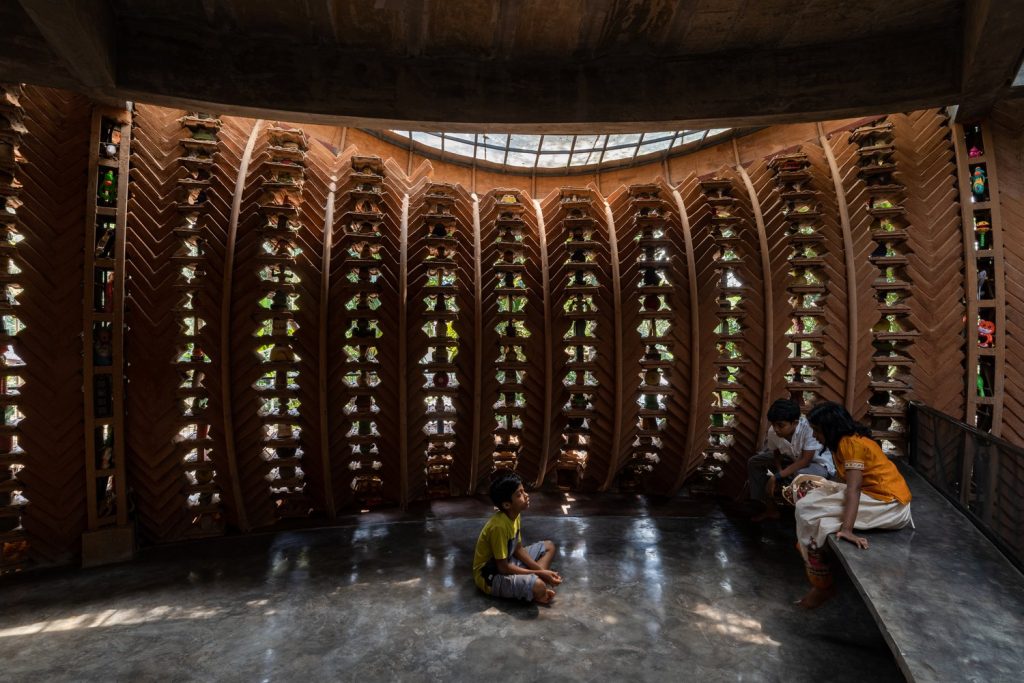
Toy Storey Residence by Wallmakers
The resulting home takes shape with a complex, latticework facade constructed from compressed stabilized earth blocks (made from soil excavated on-site) which integrate over 6,200 discarded toys. This innovative external skin has been designed to facilitate natural ventilation and enhance insulation.
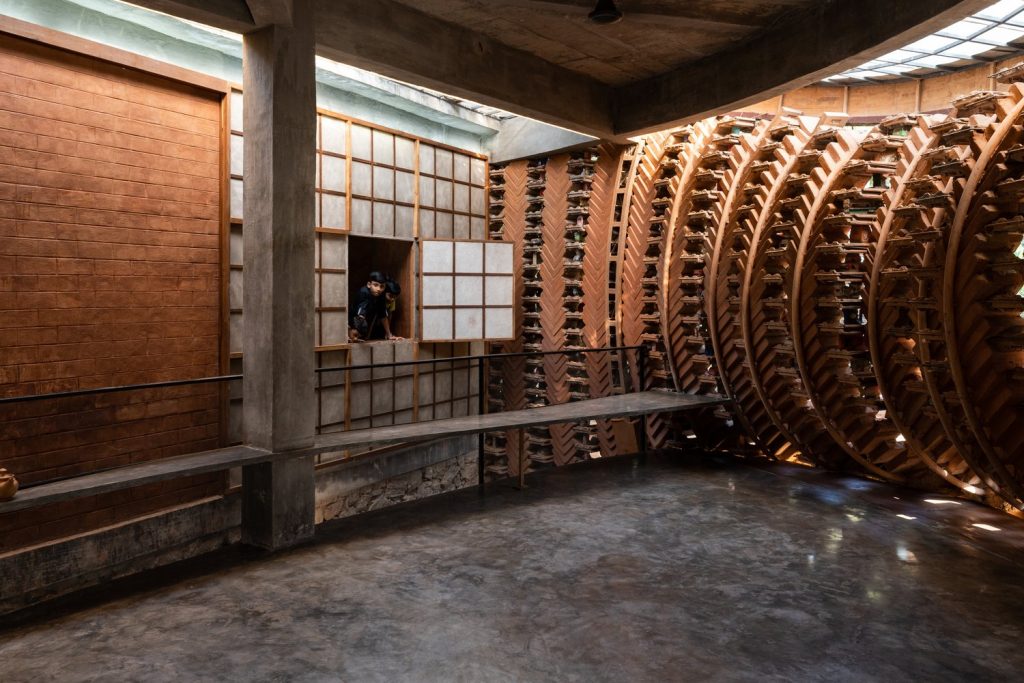
Toy Storey Residence by Wallmakers
The structure does not have a front or a back. Instead, it is accessible from all sides, fostering a sense of openness and community. Conceived as a ‘house within a house,’ the project comprises an expansive living space open for members of community, with private areas separated by translucent shoji screens, which allow for natural light and visual connection, while providing the desired level of privacy to its residents.
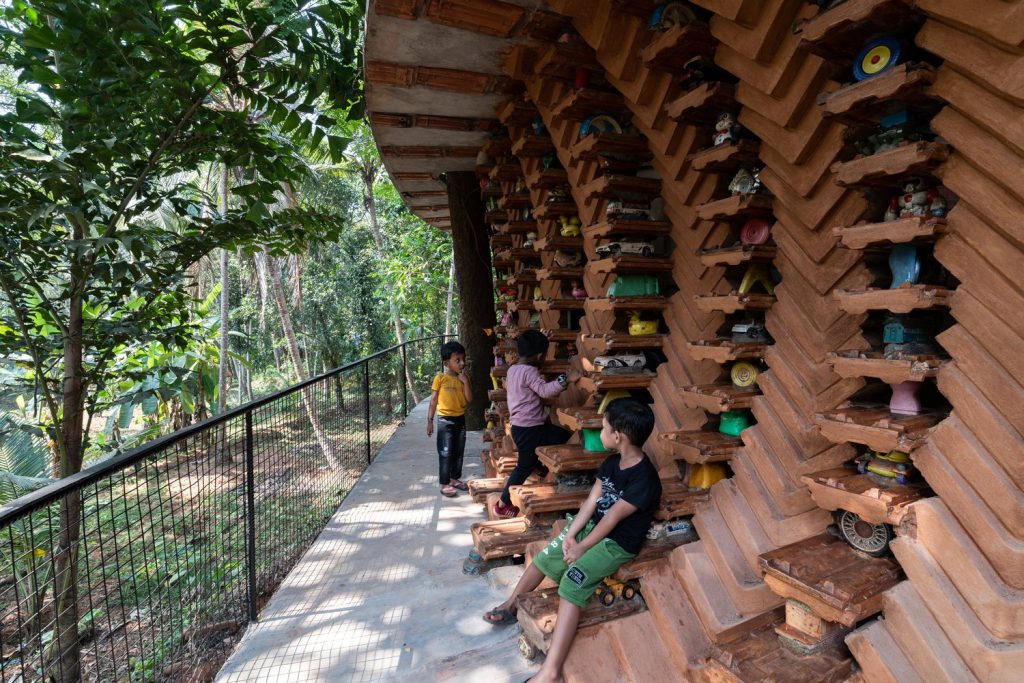
Toy Storey Residence by Wallmakers
Other sustainable features of the project include a radial ferrocement shell roof, which helps reduce reinforcement requirements by 33% and makes use of low-embodied energy CSEB walls and traditional oxide flooring techniques.